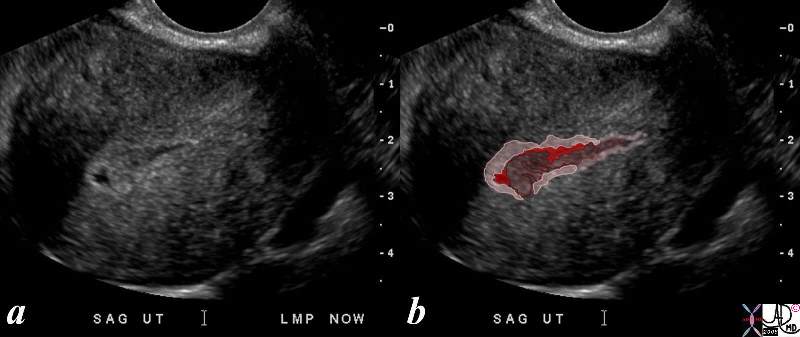Copyright 2010
Definition
Menstrual cramps or dysmenorrhea are cramps that occur during the menses or more simply painful menstruation. They are caused by uterine muscle contractions which serve to evacuate the denuded mucosa and blood clots from the endometrial cavity. Primary dysmenorrhea is more common but dysmenorrhea may be associated with other pelvic disorders such as endometriosis, adenomyosis, PID, and adhesions, in which case the dysmenorrhea may be more severe or prolonged.
Many women experience tolerable discomfort or pain but when the pain can become incapacitating. Dysmenorrhea may be associated with excessive blood loss and this is known as menorrhagia.
From a structural standpoint the pain is caused by pressure receptors that sense the increased pressure during muscle contractions, or by chemical receptors that may be incited by ischemia when contractions are excessive and temporary ischemia results.
Functionally muscle contractions of the uterus are normal and are usually not felt. If the contractions are sufficiently strong, pressure receptors are activated or ischemia is induced by obstruction of the intramural arteries, causing the pain.
Clinically the pain presents as cramps dusing the menses in the lower abdomen, usually in the suprapubic region but may be periumbilical, left or right abdomen, or may radiate down the thighs or occur in the back. Associate symptoms include nausea vomiting, headache, weakness or even fainting. If the pain pattern changes or becomes more severe, or the pelvic examination is abnormal then secondary causes should be sought and is best done by starting with an ultrasound of the pelvis.
Treatment is commonly with NSAIDS (Non steroidal anti inflammatory agents) or a COX-2 inhibitor. For some patients hormonal contraceptives prove effective. Secondary causes of dysmenorrhea may require surgery.
|
Denuded Endometrium |
| The longitudinal view of the uterus is shown in the ultrasound of this young patient who was having severe pain during her menses. The images show part of the endometrial lining within the lumen (maroon), with a small amount of blood (bright red), and the remaining endometrium lining (pink). The denuded endometrium and associated clots cause prostaglandins to be released which induce muscle contraction, and these are the primary cause of the pain.
83218c02.8s 42F pain during menses menstrual cycle cyclical pain uterus endometrium shedding of the endometrium contraction expulsion menstrual cramps US ultrasound USscan Courtesy Ashley Davidoff MD copyright 2008 |

